
Special Experience
Central Japan
The Spirit of Zen through Vegetarian Devotional Cuisine and Zazen Meditation at Mie’s Shitennoji Temple
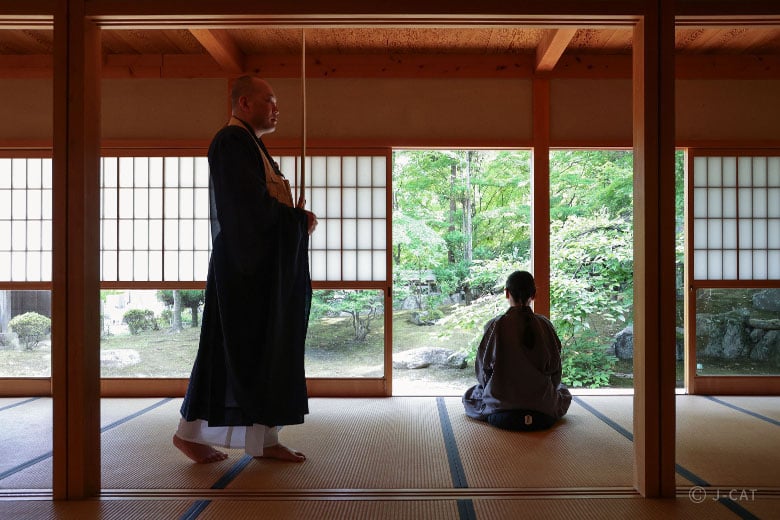
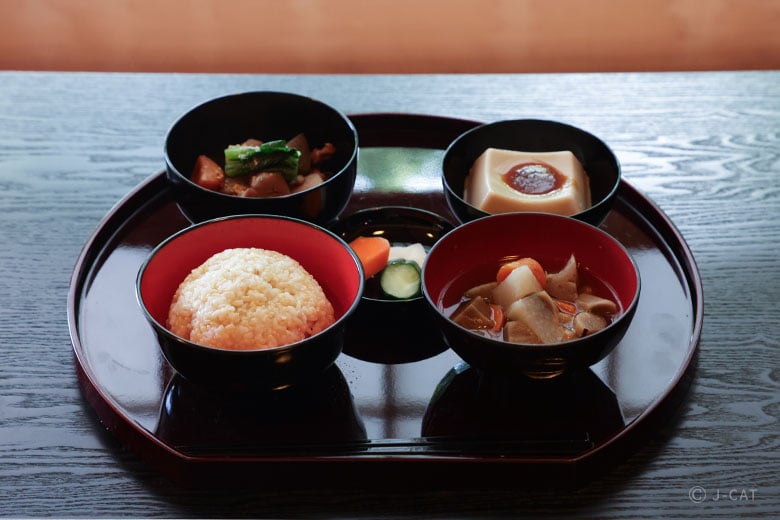
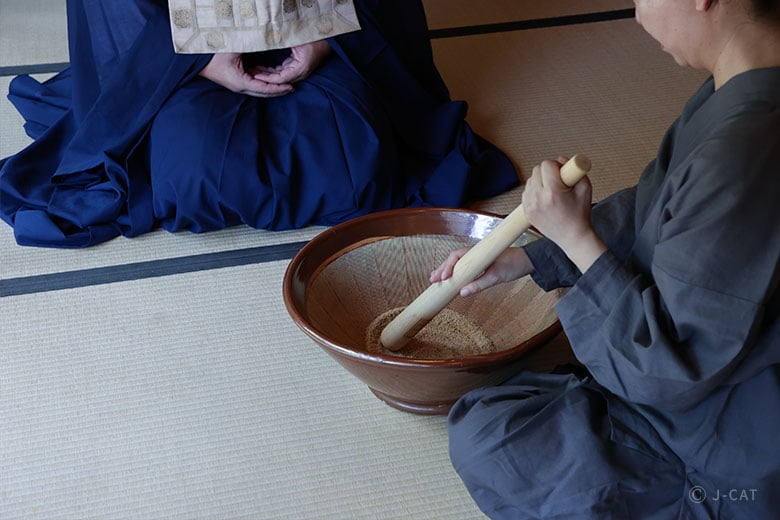
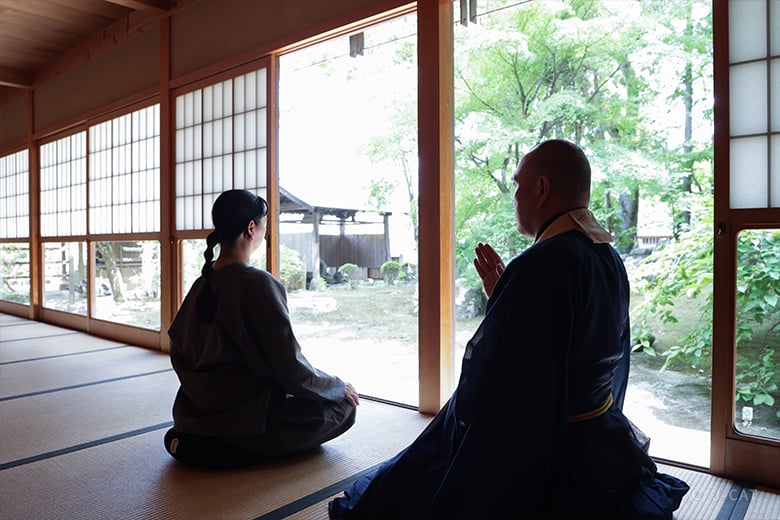
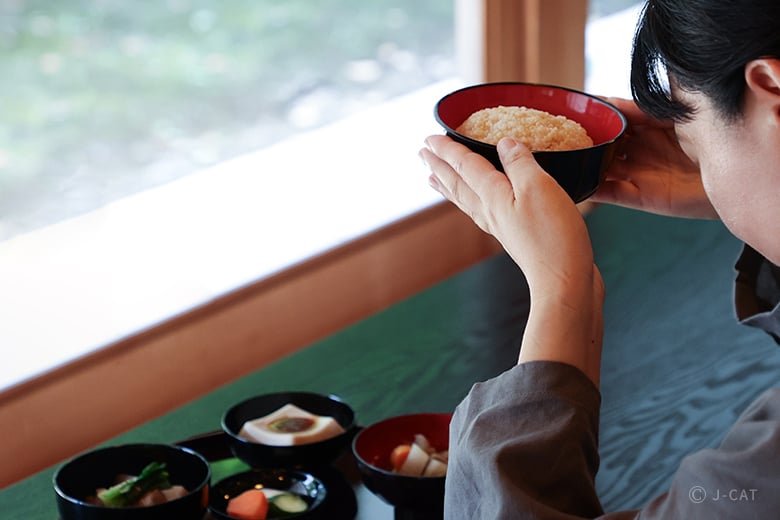
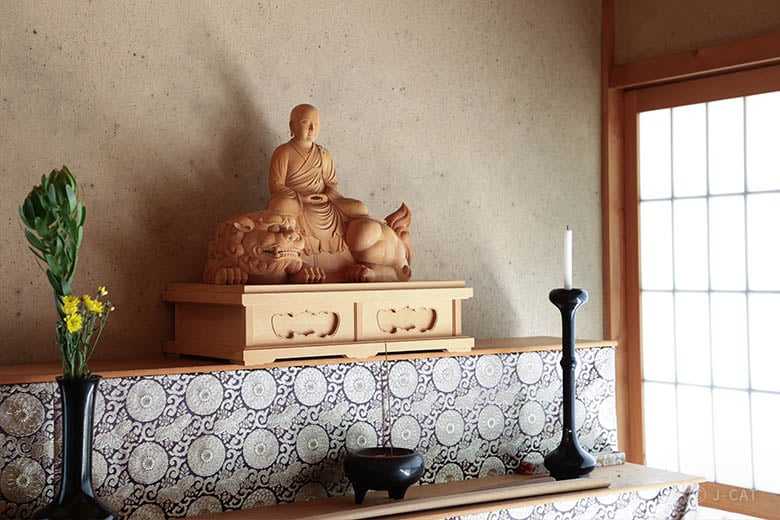
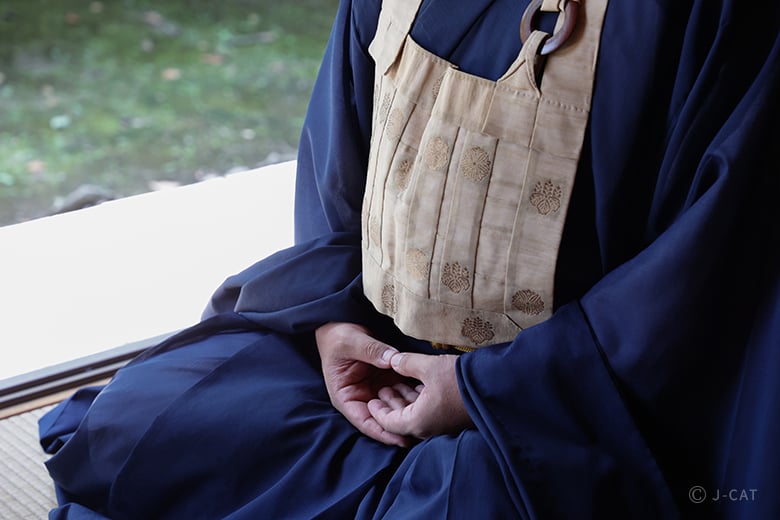
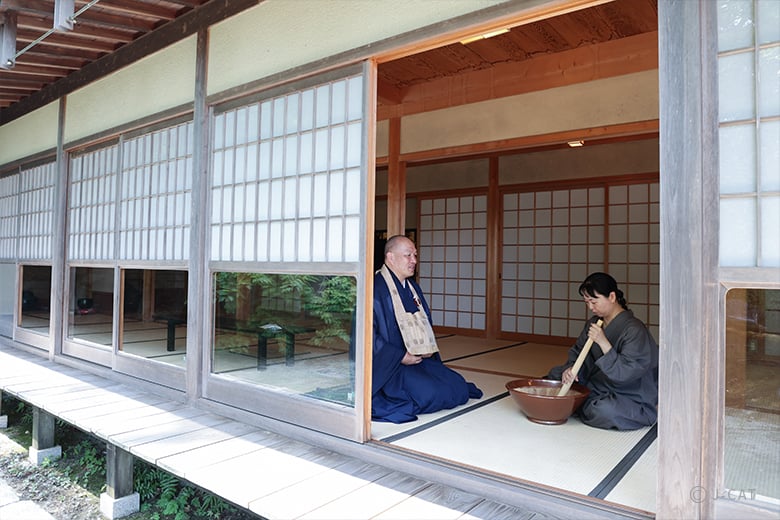
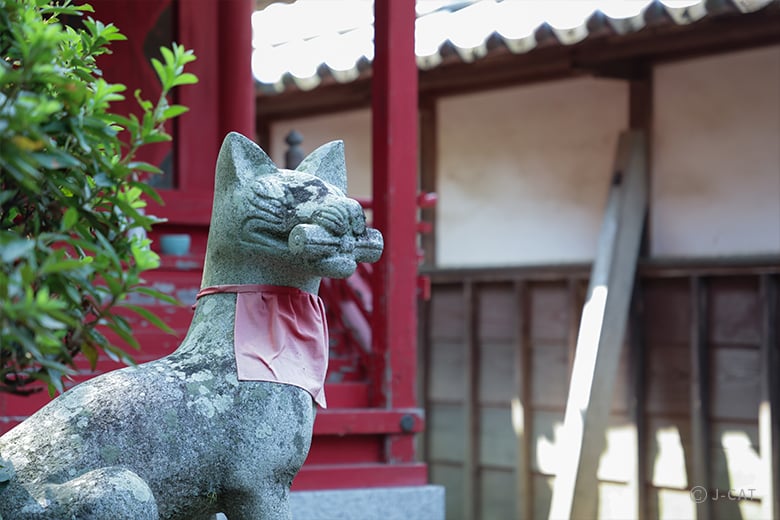
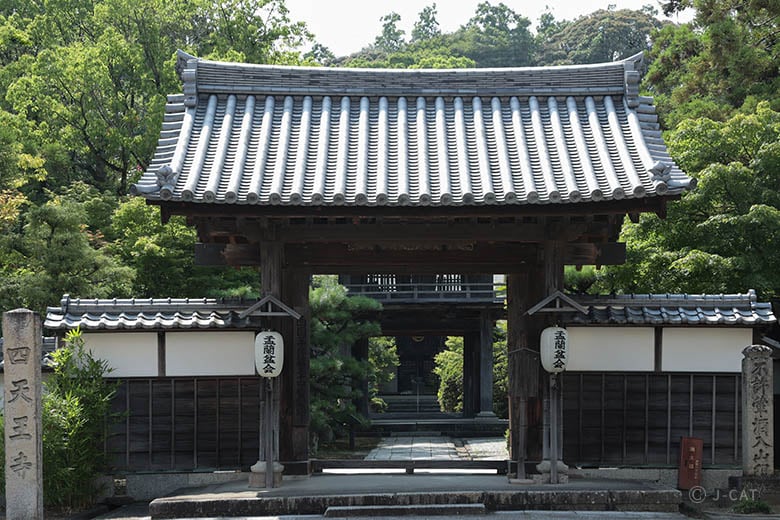
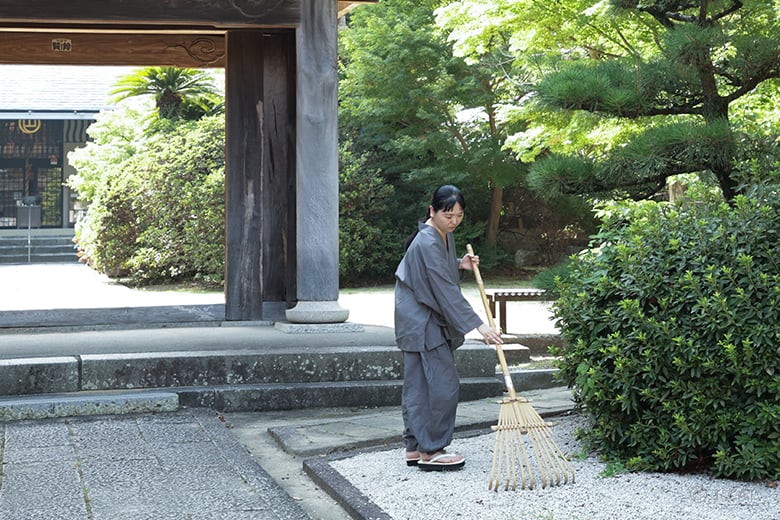
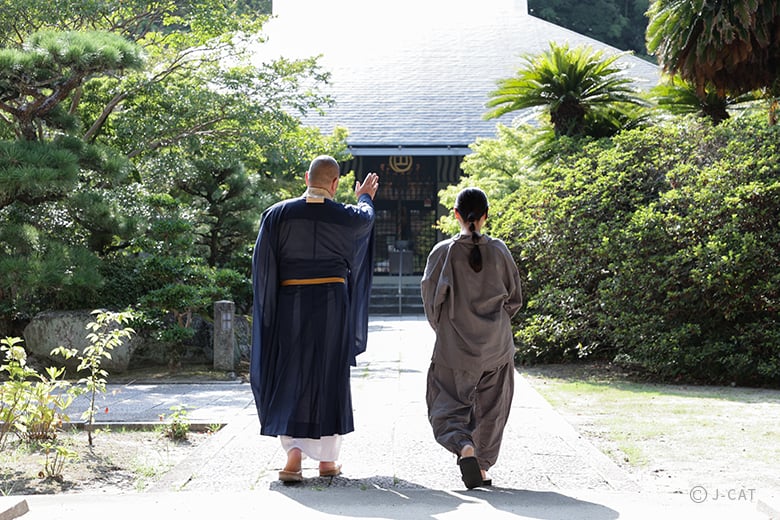
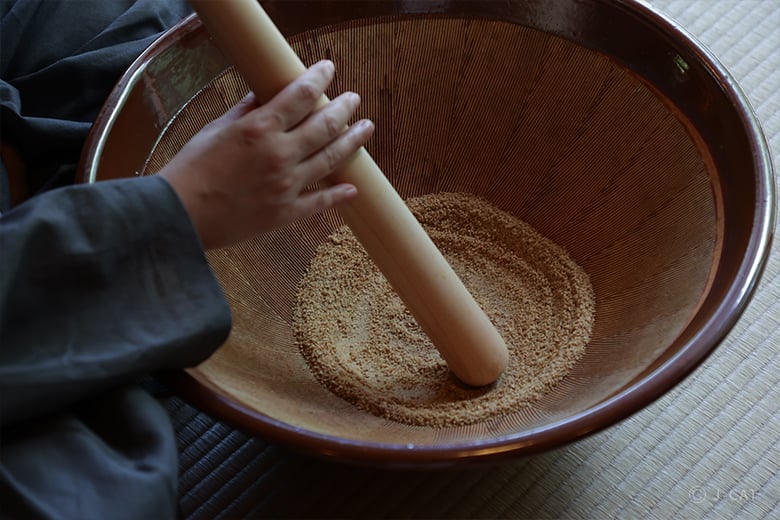
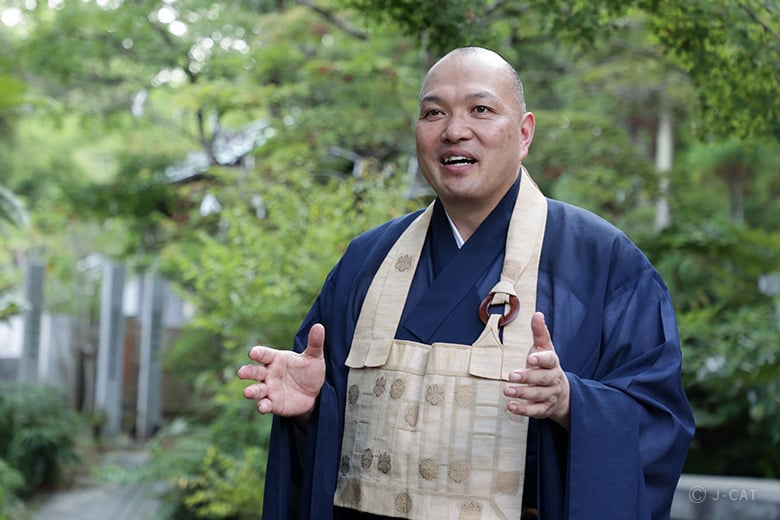
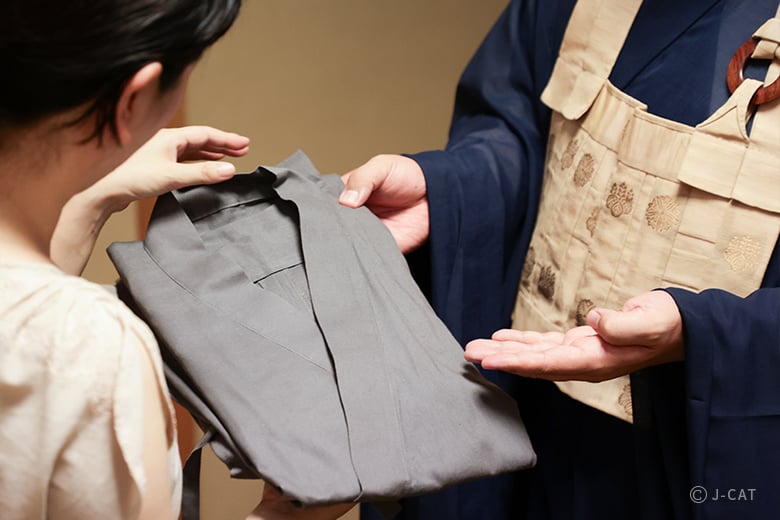
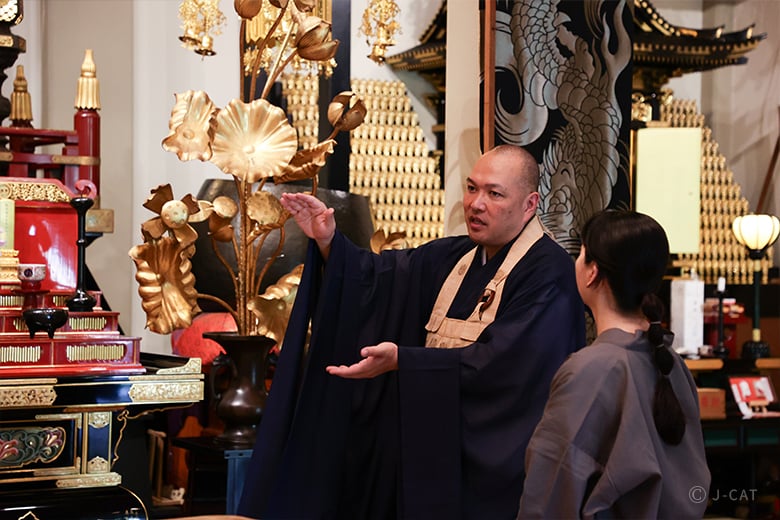
















Overview
The Soto sect temple of Shitennoji in Mie Prefecture’s Tsu City carries over a millennium of history. Here, approximately two hours from Kyoto by train, visitors can experience the lifestyle of a temple monk alongside the philosophy and traditions of Zen. Experience zazen meditation in a tranquility far removed from the everyday. Deepen your understanding of Zen and experience temple life with a private lesson in its ways, as well as a guided tour of the temple grounds directly from the temple’s globally-active 54th chief priest – as well as a cooking demonstration and a tasting of vegetarian temple devotional cuisine.
Key Features
・Experience the temple monk’s life and the Buddhist worldview through zazen meditation and samuzen aesthetic practice
・Self-reflect while basking in the temple’s unique quiet and tranquility, worlds away from workaday concerns
・After experiencing Zen with all five senses through shojin ryori vegetarian devotional cuisine, learn about its philosophy in a direct chat with the temple’s chief priest
Central Japan
150mins
from ¥172,000 /group
1 - 4 participants
Available in English
Cancel free up to 4 days prior
Details
Over a Millennium of Zen History in One Temple
Situated in the center of Mie Prefecture’s Tsu City, tradition holds that Shitennoji Temple was founded and built by Prince Shotoku, a member of the imperial family and political leader living over a thousand years ago. Sadly, the original building was lost in the numerous wars which scourged the region over the subsequent centuries, but the complex still retains important historical architectural features and artifacts. The temple’s current Sanmon gate, which was reconstructed in 1646, is a designated tangible cultural property of Tsu City, and its statues of Yakushi Nyorai and Prince Shotoku are also designated important cultural properties.

The Edo period (1603-1868) reconstruction of the Sanmon Gate is a designated tangible cultural property of Tsu City
The instructor and guide for this plan is Ryugyo Kurashima, Shitennoji’s 54th Chief Priest. His instruction in zazen meditation began at the age of three under his grandfather, and after completing his university education he trained for two years at the Soto sect’s head temple Eiheiji. After that, he also undertook Zen training in France and Germany.

Chief Priest Ryugyo Kurashima has a knack for tailoring his detailed but easily understood talks to his audience
Back in Japan, Kurashima served at the Ise International Forum for Religions, where as organizer he helped to host the 14th Dalai Lama. Kurashima is no stranger to the modern interest in events and activities that transcend the boundaries of specific religions or sects: having produced the film Tenza, shown at the Cannes Film Festival, and holding events themed around Buddhism and SDGs.
Donning a Samue to Begin the Experience
The samue (literally “work vestment”) is the traditional labor dress of Zen temple monks during such activities as cleaning and cooking. It is a loose-fitting garment with long sleeves and pants, designed for ease of movement. Shitennoji’s samue are crafted from carefully selected materials with special dyeing techniques. Donning a samue is one step on the path to letting go of everyday concerns and entering the serenity of temple life.

Shitennoji’s original artisan-crafted samue temple work garment
Begin by strolling the temple garden with the chief priest as he talks you through the temple’s history and points out such highlights at the Sanmon Gate (a designated tangible cultural property), as well as the tomb of Dota Gozen, a 16th Century noblewoman whose son Oda Nobunaga went on to become the first great unifier of Japan and a tremendously influential military and political leader. If you are interested, you can practice sweeping the garden – where stones and gravel are arranged into beautiful lines designed to bring comfort to visitors – with a bamboo broom as the monks do.

Discover the temple’s history and etiquette directly from its chief priest
Inside the hall, Kurashima will give you attentive instruction in the etiquette of paying respects and worshiping, including removing your sandals, treading the tatami, and burning incense.
True Zazen Meditation under a Monk
Those entering the zazen meditation hall move with quiet and calm to center themselves and show respect to the bodhisattva Manjushri enshrined within. Manjushri presides over wisdom, and those who meditate here seek to have it bestowed upon them. Zazen here is performed cross-legged on a special seating cushion, making it more accessible than methods involving sitting directly on the hard floor. Chief Priest Kurashima will model the position for you, right down to hand and foot placement.

Pay respects to the bodhisattva Manjushri before taking your seat
When you have found your posture, let yourself face forward naturally. Kurashima lights a stick of incense and rings the meditation bell thrice to indicate commencement. Three is not an arbitrary number, as each ring is meant to communicate a specific reminder: the first good posture, the second good breathing, and the third a centered mind. Give yourself over to silence and tranquility, and let your mind be free of any concerns. The end of meditation is signaled by the burning out of the incense, which Kurashima marks with a single ring of the bell. Finish the session by clasping your hands together.

Give yourself over to the silence while taking in the tree-lined garden
Discover the Secrets of Vegetarian Devotional Cuisine
The latter half of the experience takes you deeper into temple life with a tasting of shojin ryori: vegetarian temple devotional cuisine made with plant-based seasonal ingredients to create delicious flavors without the use of animal parts or the “five fragrant plants” (chives garlic, scallions, onions, and green onions). Once a cuisine only for monks, it treats each ingredient and act of preparation as sacred, doing all the work involved by hand and emphasizing gratitude for sustenance and for life. Watch a live demonstration of the meal preparation, and listen to an explanation of the history and philosophy behind this culinary tradition. You can also try out some of the simple tasks yourself, such as grinding sesame with mortar and pestle.

Breathe the aroma of fresh-ground sesame – used as a stew topping
Shitennoji’s shojin ryori uses brown rice as its staple grain, served with soup, seasonal stews, sesame tofu, and pickled vegetables. It emphasizes the rich flavor of each carefully selected ingredient itself, rather than relying on sauces or seasonings. To be present in the act of eating, savor each mouthful, and show appreciation and gratitude to the food and its preparer, Buddhist temple meals are taken in slow and focused silence, concentrating on one bite after the next without speaking. Hand-selected ingredients, careful preparation, and gorgeous presentation (including colorful seasonal vegetables) make these meals a must-try.

Give your meal your full attention as you savor each mouthful
Deeper Discovery through Dialogue
After eating, take the opportunity for a final chat with the chief priest. You might like to reflect on what you have learned and experienced of Zen at the temple, or avail yourself of the master’s expertise and wisdom through direct questions or discussion about Zen training, Buddhist thought, or the temple itself.

An opportunity for deeper understanding of Zen Buddhist thought
A more profound understanding of Zen and Buddhist philosophy awaits, and you can discover it through zazen meditation and vegetarian devotional cuisine within the temple’s tranquil grounds. Here, you can rediscover yourself in quiet moments of reflection, far from the concerns of the day-to-day.
Shitennoji Temple

Shitennoji Temple
This Soto sect Zen Buddhist temple in Mie Prefecture’s Tsu City is the city’s oldest temple, founded by Prince Shotoku over a millennium ago. Located along the pilgrimage route to the Grand Shrine of Ise, it has been a stop for countless visitors in the centuries since. Visitors here can experience the Zen Buddhist principle of “Body and Mind as One” (shinshin ichi-nyo) through zazen meditation and the aesthetic practice of sutra copying.
Location
Shitennoji Temple
Tsu, Mie
Request for booking
Select first preferred date (JST)
December 2025
Sun
Mon
Tue
Wed
Thu
Fri
Sat

Instant Booking

Request Booking

17
Full

17
Unavailable
Central Japan
150mins
from ¥172,000 /group
1 - 4 participants
Available in English
Cancel free up to 4 days prior
Things to know
Contact Us
If you have any questions, please contact us using the form below.
We also accept bookings from corporate clients and travel agencies.